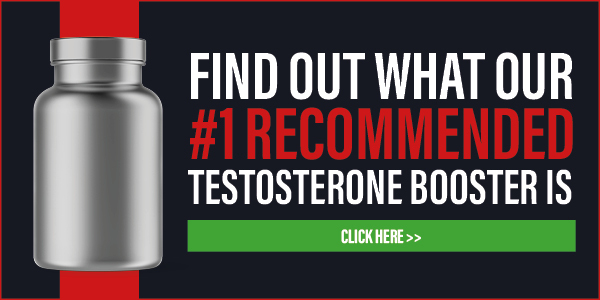Professional bodybuilders and amateur athletes, all fervently striving to build muscle mass, are fully aware that achieving the desired muscle definition is an intricate task. It often requires special aids to overcome natural limitations and maximize gains, especially when aiming for defined cuts and lean mass.
Among the arsenal of supplements and drugs available, testosterone propionate stands out as one of the most popular choices in the bodybuilding community. This synthetic hormone is mainly utilized during the crucial cutting phase, where minimizing muscle loss is a priority, and lean muscle development is the objective.
However, the application of testosterone propionate goes beyond athletic pursuits. Sometimes, this medication is prescribed for specific medical conditions, owing to its unique composition that includes both testosterone and a propionic acid ester.
Testosterone Propionate: A Comprehensive Overview
Testosterone propionate offers an androgenic action on the male body, responsible for inducing the growth and correct functioning of vital organs such as the prostate, penis, testicles, and vesicular glands. Its administration also triggers the appearance of secondary sexual characteristics, making the voice coarser and imprinting a male pattern of hair distribution.
Beyond sexual characteristics, this substance plays a vital role in originating male sexual behavior and molding the natural body type. It boosts various aspects of male sexual health, from enhancing spermatozoa production to increasing libido, and optimizing erectile function.
However, it is the anabolic properties of this medication that garner the most interest among bodybuilders and athletes. By improving muscle protein synthesis, testosterone propionate acts as a catalyst for muscle growth, suppresses fat deposition, and facilitates the necessary substances required for protein biosynthesis.
Feedback from bulkers highlights how the administration of testosterone propionate intensifies reactions of calcium accumulation inside bone tissue and stimulates the process of building muscle mass. When paired with a sufficient intake of protein, the synthesis of hematopoietin (a vital hormone secreted by the kidneys) in the body is enhanced.
Furthermore, this pharmaceutical agent contributes to reducing the formation of FSH and prolactin and acts as a direct antagonist of female hormonal substances such as estrogens. The medical community recognizes its importance too, with doctors often prescribing it for treating hormone-dependent tumors, like breast cancer, as documented on the testosterone propionate wiki page.
Interactions with Other Medications
Understanding the potential drug interactions is vital when considering testosterone propionate administration. It’s essential to acknowledge that the efficacy of its key agent may be diminished by the introduction of specific activators of microsomal hepatic enzymes. These substances include barbiturate drugs, “bute” (an NSAID drug), Tegretol, Rifampicinum, and Dilantin, which may interfere with testosterone propionate’s desired effects.
Simultaneously, androgenic medications have the potential to enhance the hypoglycemic action of insulin. As a consequence, some males undergoing concurrent insulin therapy might need to adjust the dosage of their hypoglycemic medication to avoid unintended complications.
Furthermore, testosterone therapies can influence the absorption and effectiveness of other drugs. For example, an elevation in the content of certain NSAIDs in blood plasma may be observed upon concurrent administration. Testosterone propionate specifically amplifies the effects of blood thinners taken orally, often necessitating a careful dosage correction to maintain optimal therapeutic levels.
When combined with adrenocorticotropic hormones or corticosteroid drugs, testosterone propionate increases the risk of edema development. Alcohol consumption during the treatment cycle may exacerbate negative outcomes, warranting caution.
In specific cases of severe hypogonadism, testosterone propionate can be administered in conjunction with estrogens and thyroid-stimulating medications. Additionally, its interaction with other anabolics, phosphorus-containing medications, and certain vitamins is noted to amplify their effects when taken simultaneously with testosterone propionate therapy.
Testosterone Propionate’s Indications for Use
Testosterone propionate is not limited to bodybuilding and is prescribed for various medical conditions, encompassing both men and women. The range of applications include:
- Treatment for Kallmann syndrome, primary and secondary male hypogonadism (as replacement therapy).
- Management of impotence stemming from endocrine disorders.
- Addressing post-castration syndrome.
- Counteracting infertility due to weak spermatozoa synthesis and oligospermia.
- Alleviating symptoms of male menopause.
- Treating osteoporosis resulting from a deficiency of androgens.
- Managing early stages of BPH (benign prostatic hyperplasia).
- Dealing with menopause-related female issues, such as uterus myoma/fibroid and endometriosis.
- Treatment of hormone-sensitive tumors, including breast cancer.
- Intervention for hyperestrogenism-related profuse functional bleeding.
- Therapy for mastopathy, linked to painful gland swelling in mammals during the premenstrual period.
- Correction of anemia (deficiency of red blood cells).
In addition to these clinical applications, testosterone propionate is utilized as an anabolic treatment for diseases accompanied by intensive protein breakdown, such as severe traumatic injuries, exhaustion, and chronic infectious medical conditions. The bodybuilding community values it for rapid muscle mass gain, fat metabolism acceleration, enhanced muscle definition creation, and strength improvement.
Utilization in Medical Practice and Testosterone Propionate Cycle in Athletics
Testosterone propionate has distinct applications in medicine and sports, each requiring unique protocols, dosage, and methods of administration. These depend on the underlying conditions, goals, and specific needs of the individual.
Medical Use
When there are indicators for therapy with testosterone propionate for medical purposes, the proper dosage must be carefully determined by a healthcare professional. This assessment takes into account the existing state and stage of the condition, along with the individual’s overall health profile.
Typically, injections of testosterone propionate are administered into the Gluteus Maximus muscle in the buttocks. But how much to inject, and how often?
- For conditions like eunuchoidism, congenital hypoplasia of the sexual glands, or following their removal during surgery or traumatic injury, the dosage may range from 25 to 50 milligrams. These are injected into the muscle or under the skin three to four times weekly. The duration of treatment depends on individual factors, such as the nature of the disorder and the effectiveness of the therapy.
- In cases where symptoms improve, a maintenance dose of 5-10 mg may be prescribed, administered daily or every other day.
- Other conditions, like erectile dysfunction, male menopause, or nervous and vascular ailments, may necessitate a daily dose of 10 milligrams or 25 mg two to three times a week. The total therapy duration typically spans one to two months.
Athletic Use
The testosterone propionate cycle in sports varies significantly from medical use, especially among bodybuilders and athletes.
- Beginners might administer 30-50 mg every other day, while veteran athletes may inject 100 mg or even more on a daily basis.
- Testosterone propionate is often combined with other steroid preparations in a carefully crafted stack to achieve specific goals. For example, some athletes might combine it with Winstrol, which they can purchase online or in stores.
- Since propionate is the shortest ester of exogenous testosterone, injections are frequent, every day or every other day. The injections must be performed slowly and carefully, most commonly in the buttocks.
- To counteract testosterone’s ability to aromatize, athletes may start taking 1 tablet of Anastrozole every 4 days from the third week onward. This powerful tool helps prevent unpleasant side effects like gynecomastia and water retention.
Components of the Propionate Cycle
- Testosterone Propionate: The cornerstone of therapy, facilitating a significant increase in testosterone. Benefits include fast recovery post-exercise, muscle growth improvement, and more.
- Anastrozole: Given testosterone propionate’s ability to influence estrogen levels, Anastrozole acts as an estrogen rate reducer, aiding in avoiding negative consequences associated with excessive estrogen.
- Clomid: Essential during post-cycle therapy (PCT), Clomid helps restore natural testosterone levels by signaling the hypothalamic–pituitary–gonadal axis. Within 26 days after the start of PCT, hormonal levels typically normalize.
When purchasing these drugs, be mindful of suspiciously low-cost offers online, especially from websites offering anabolic steroids and related medications like Cabergoline (Caber). Counterfeit products are prevalent, and caution must be exercised to ensure safety and efficacy.
Testosterone Propionate: Dosage Form and Composition
Testosterone propionate is primarily formulated for men and is available in injectable forms as either a 5% or 1% solution in 1-milliliter ampoules. Specifically, one milliliter of the 5% solution contains 50mg of the active substance, and 1 ml of the 1% solution contains 10mg. Besides the main active agent, testosterone propionate, the formulation also includes an auxiliary component known as ethyl oleate. These components together create a potent hormonal preparation designed for specific medical and athletic purposes.
Brand Names and Availability
This medication is marketed and sold under various brand names. Some popular ones include Agrovirin, Andrusol, Neo-Hombreol ointment (which is discontinued), Perandren, Synandrol, Oreton, among others. While selecting a product, it’s essential to carefully examine the active agents listed on the package. Ensuring that the medication is sourced from a reputable provider can help in avoiding counterfeit or substandard products.
Potential Side Effects
Use of this artificial hormone may lead to a range of side effects. Awareness and careful monitoring are vital for those taking testosterone propionate. Some common and noteworthy side effects include:
- Sexual and Reproductive Issues:
- Enhanced sexual arousal, constant erection, priapism.
- Development of gynecomastia and abnormally high libido.
- In women, masculinization might occur, leading to excessive facial and body hair, a rough and coarse voice, and unpleasant facial skin edema. This underlines that steroids for women can be a poor choice.
- Men may experience a reduction in spermatogenic cells, specifically sperm, according to research (Jezek D, Simunić-Banek L, Pezerović-Panijan R., University of Zagreb, 1993).
- Respiratory Complications:
- Respiratory failure and sleep apnea have been observed.
- Digestive Problems:
- Increased levels of aminotransferases, hepatocellular jaundice, upper stomach discomfort, and general stomach upset can occur.
- Skin and Dermatological Conditions:
- Various skin issues such as alopecia, seborrheic eczema, itching, and acne vulgaris may manifest.
- General Health Concerns:
- Other general symptoms may include increased sweating, dispiritedness, nervousness, headache, and dizziness.
- An increased propensity for thrombosis, and in rare instances, polycythemia has been reported.
- Comparison with Other Steroids:
- Similar side effects can be observed with other steroids, such as Trenbolone, Mesterolone, and Proviron. These compounds may vary in strength and application but share some common health risks.
Given the extensive list of potential side effects, careful consideration and consultation with a healthcare provider are vital before beginning any testosterone propionate therapy. Continuous monitoring and adjustments in dosages or treatment protocols can help minimize risks and manage any adverse effects that may occur.

